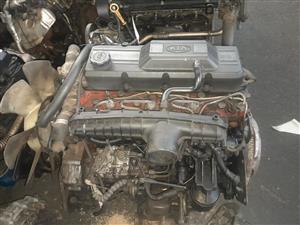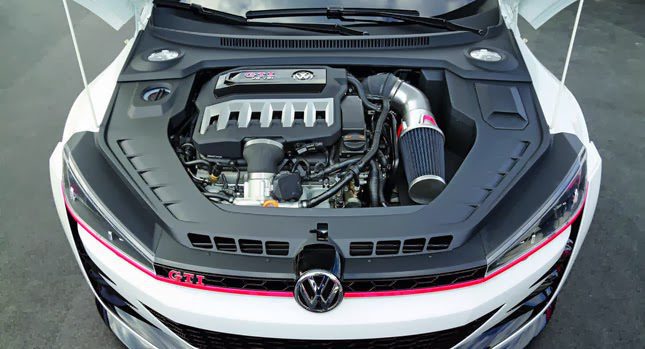Enhance Your Trip with a High-Quality Opel Corsa Engine
Enhance Your Trip with a High-Quality Opel Corsa Engine
Blog Article
Checking Out the Inner Workings of a Compact Lorry's Engine System
As motorists, we often take for approved the intricate procedures that occur within the boundaries of our lorry's engine system. In this exploration of a compact car's engine system, we will certainly unravel the inner operations of this mechanical symphony, losing light on the mysteries that drive us ahead on our day-to-day journeys.
Combustion Refine Review
The combustion process in a portable lorry's engine system is an important system that successfully converts fuel right into power to power the automobile. This procedure happens within the combustion chamber of the engine, where gas and air mix, ignite, and produce regulated explosions. The burning process consists of four main stages: consumption, compression, exhaust, and power.
Throughout the consumption stage, the piston moves downward, attracting in a combination of air and fuel into the combustion chamber. This down activity generates the power needed to drive the car. This cyclic burning procedure is basic to the operation of a compact vehicle's engine system, making certain efficient power conversion for propulsion.
Piston and Cyndrical Tube Communication

The piston's accurate fit within the cyndrical tube is important for maintaining optimal compression and avoiding energy loss during burning. Tight clearances in between the piston and cylinder walls guarantee efficient sealing, permitting the piston to relocate smoothly without permitting gases to leak past. Proper lubrication is additionally important to minimize rubbing and wear in between these components, enhancing longevity and performance.
In addition, the layout and products utilized in producing the piston and cylinder impact engine performance and durability. Modern engines often use light-weight yet long lasting materials like aluminum alloys for pistons and cyndrical tube linings to minimize inertia and enhance thermal performance. Overall, the unified interaction between the piston and cyndrical tube is essential to the engine's functionality and overall efficiency.
Fuel Injection System Capability
Fuel shot systems in small lorry engines play an important role in specifically providing fuel to the combustion chamber for reliable and controlled ignition. The gas injection system functions by infusing fuel right into the burning chamber at the ideal moment during the engine's procedure (opel corsa engine). This accurate timing guarantees that the gas mixes evenly with the air for correct combustion, bring about improved gas efficiency and decreased exhausts
There are largely two sorts of fuel shot systems used in small lorry engines: port fuel injection (PFI) and straight gas injection (DFI) PFI systems infuse fuel into the consumption port prior to the intake shutoff, while DFI systems infuse fuel straight into the combustion chamber. Both systems have their advantages, with DFI providing much better gas atomization and PFI supplying a more cost-efficient service.
Comprehending Engine Air Conditioning Devices
Reliable operation of a compact vehicle's engine relies greatly on the performance of its cooling mechanisms. The air conditioning system in a portable automobile usually consists of several parts working with each other to control the engine temperature level. Comprehending these engine cooling devices is crucial for preserving the efficiency and long life of a portable automobile's engine system.

Exhaust System Elements Explained
The optimum functioning of a portable vehicle's engine air conditioning systems depends on a corresponding system referred to as the exhaust system, which makes up various essential parts for wikipedia reference making certain reliable discharges and engine performance. The exhaust system consists of components such as the exhaust manifold, catalytic converter, muffler, and tailpipe. The exhaust manifold collects exhaust gases from the engine's paths and cyndrical tubes them to the catalytic converter. The catalytic converter after that transforms damaging contaminants in the exhaust right into less harmful exhausts before releasing them with the muffler and tailpipe.
One critical part of the exhaust system is the oxygen sensor, which monitors the oxygen degrees in the exhaust gases to help control gas consumption and make certain optimal engine efficiency. opel corsa engine. Furthermore, the resonator might be existing in some exhaust systems to lower noise degrees. On the whole, the exhaust system page plays an important duty in maintaining engine effectiveness, lowering hazardous discharges, and making certain a quieter driving experience for compact automobile proprietors

Final Thought
To conclude, the compact automobile's engine system is an intricate mix of elements that function together to assist in the combustion procedure, transform fuel into energy, and get rid of waste gases. Recognizing the internal workings of the engine system, including the piston and cylinder interaction, fuel injection system, engine air conditioning mechanisms, and exhaust system elements, is vital for maintaining optimal performance Get More Information and effectiveness of the automobile.
The burning procedure in a compact car's engine system is an essential device that successfully transforms gas right into power to power the lorry.Gas shot systems in small automobile engines play an essential duty in specifically supplying gas to the burning chamber for controlled and efficient ignition.There are mainly 2 kinds of fuel injection systems utilized in portable lorry engines: port gas injection (PFI) and direct fuel injection (DFI) Understanding these engine cooling mechanisms is vital for maintaining the performance and longevity of a portable lorry's engine system.
The optimum functioning of a small car's engine air conditioning mechanisms depends on a corresponding system understood as the exhaust system, which makes up different necessary parts for ensuring efficient emissions and engine performance.
Report this page